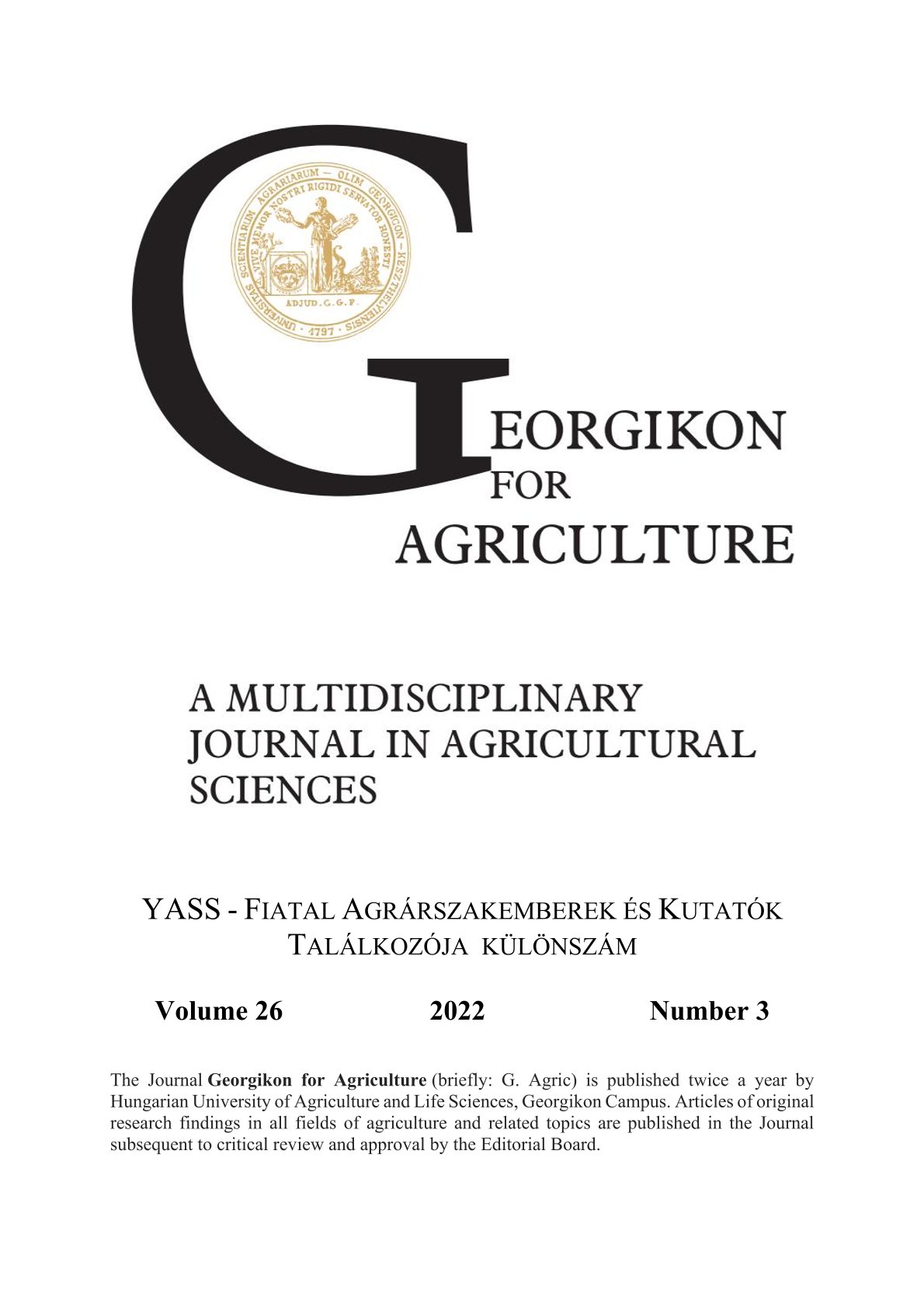Study on the payback of vineyard plantation
Keywords:
grape, planting, return, vineyardsAbstract
The vineyard area was 7.5 million hectares around the world - due to the International Organisation of Vine and Wine (OIV)- showing a downward trend in 2021. The vine production of Hungary has had a centuries-old history and the wine- and grape sectors are still significant today. The Hungarian wine- and grape sector represent about 1% of the world’s wine production. The Hungary wine sector is still focusing on the Hungarian market. The size of the vineyard considerably declined after EU accession. However, it seems to have stabilized in the last couple of years, it is currently about 63 thousand hectares. A clear trend is recognized as the slow increase in the production of blue grapes (30% in 2019) and the growth of fragrant white and resistant varieties (HNT, 2021). Hungary is a small wine producing country with a great diversity of terroirs. European Union strictly regulates wine-grape growing therefore one percent area expansion is allowed per year for member states. There is a chance to increase their production potential to a limited extent for member states thanks to the new vineyard licensing regulation of the European Union. We carried out economic calculations for one hectare of vineyard within the scope of our study. We have been trying to find out the costs of planting one hectare of ’Cserszegi fűszeres’ grape, the revenue that can be realized over a 10-year period and the payback period of the plantation.
References
http://www.oiv.int/oiv/cms/index?lang=en
Az 1995. évi CXVIII. törvény a személyi jövedelemadóról
Az 1996.évi LXXXI. törvény a társasági adóról és az osztalékadóról szóló törvény 2. számú melléklete
A 2000. évi C törvény a számvitelről
Birher, I., Pucsek, J., Sándor L.-né, Sztanó, I. 2006.: A vállalkozások tevékenységének komplex elemzése. Perfekt, Budapest
Bíró, Sz., Nemes, G. 2014. Vidékfejlesztési támogatások, lehívások, eredmények Gazdálkodás. 58(3). 247–262.
Harangi-Rákos, M., Szabó, G. 2012. A mezőgazdasági szervezetek gazdálkodásának vizsgálata a 2002-2009 közötti időszakban. Gazdálkodás, 55(4). 358–366.
Hegyközségek Nemzeti Tanácsa 2016. Magyarország szőlészetének és borászatának helyzete - Háttértanulmány az ágazati stratégiához.
Helgertné, Sz. I. 2003. Számvitel Mezőgazdasági példákkal Szaktudás Kiadó Ház, Budapest
Kispál, G. 2014.: Csongrádi szőlőtelepítés, avagy a csongrádi térség fenntarthatóságának alternatívája. Borászati füzetek, 2014/05.
Sabján, J., Sutus, I. 2003. Vezetői számvitel az agrártermelésben Szaktudás Kiadó Ház, Budapest
Sutus, I. 2002. Gyakorlati számvitel a mezőgazdaságban. Szaktudás Kiadó Ház, Budapest
Sutus, I. 2011. Mezőgazdasági számvitel és elemzés. Szaktudás Kiadó Ház Rt., Budapest
Downloads
Published
Issue
Section
License
Copyright (c) 2022 Szabó Péter, Soós Adrienn, Szanati Angéla, Veszelka Mihály

This work is licensed under a Creative Commons Attribution-NonCommercial-NoDerivatives 4.0 International License.
Cikkre a Creative Commons 4.0 standard licenc alábbi típusa vonatkozik: CC-BY-NC-ND-4.0. Ennek értelmében a mű szabadon másolható, terjeszthető, bemutatható és előadható, azonban nem használható fel kereskedelmi célokra (NC), továbbá nem módosítható és nem készíthető belőle átdolgozás, származékos mű (ND). A licenc alapján a szerző vagy a jogosult által meghatározott módon fel kell tüntetni a szerző nevét és a szerzői mű címét (BY).




